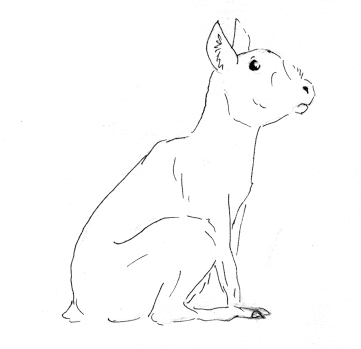
In Arel, the home timeline, biologists regard the "ungulates" (hoofed mammals) as a single, if highly diverse and varied clade. In Spec, however, Ungulata is undoubtedly paraphyletic, encompassing many non-related clades on the basis of superficial appearance. Throughout Spec's Tertiary, a number of mammalian groups have independently evolved ungulate-like features (namely hooves). Perhaps the best example of this bizarre trend are the tingamarroids, a group of Australian eutherians whose existence patently impossible.
Besides the flying chiropterans, Tingamarroida forms the only family of placental mammals in the Australian realm. Perhaps tingamarroids migrated from South America before Gondwana had entirely split apart, or perhaps they are descended from some African or Asian species that somehow rafted or swam to Australia. The tingamarroid fossil record nonexistent, and their peculiar anatomy sheds no light on their origins.
The tingamarroids (one family, one genus, two species) occupy Tasmania and southern Australia, where they eat grasses and other small vegetation. They are very fleet-footed and skittish, with excellent senses and a nocturnal disposition. Tingamarroids possess cloven hooves like those of the artiodactyls of Home-Earth, but this trait is almost certainly convergent. They are obviously eutherian, bringing offspring to full term in the placenta (womb) and then suckling the newborns for between six and eight months. The teeth of a tingamarroid are quite strange, with large, flattened incisors, totally absent canines, and a set of deep-rooted, ever-growing molars most similar to those of the North American taeniodonts! Australia, traditionally a land of strange creatures, has surpassed itself with the unassuming tingamarroids, classified now as a sister group to the entirety of Eutheria, further removed from their closest living relatives than even the bizarre xenarthrans and taeniodonts.